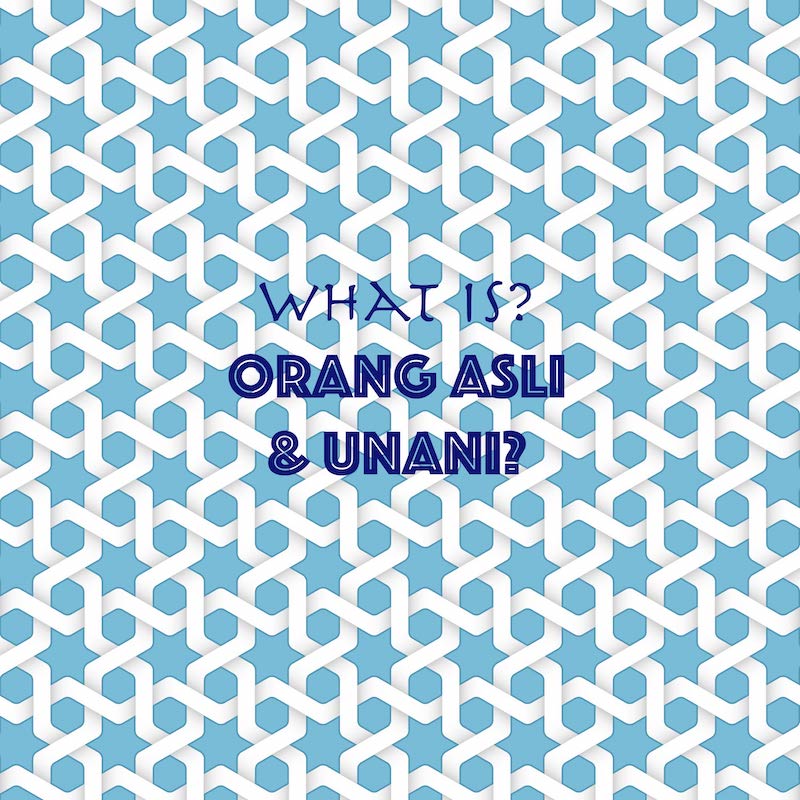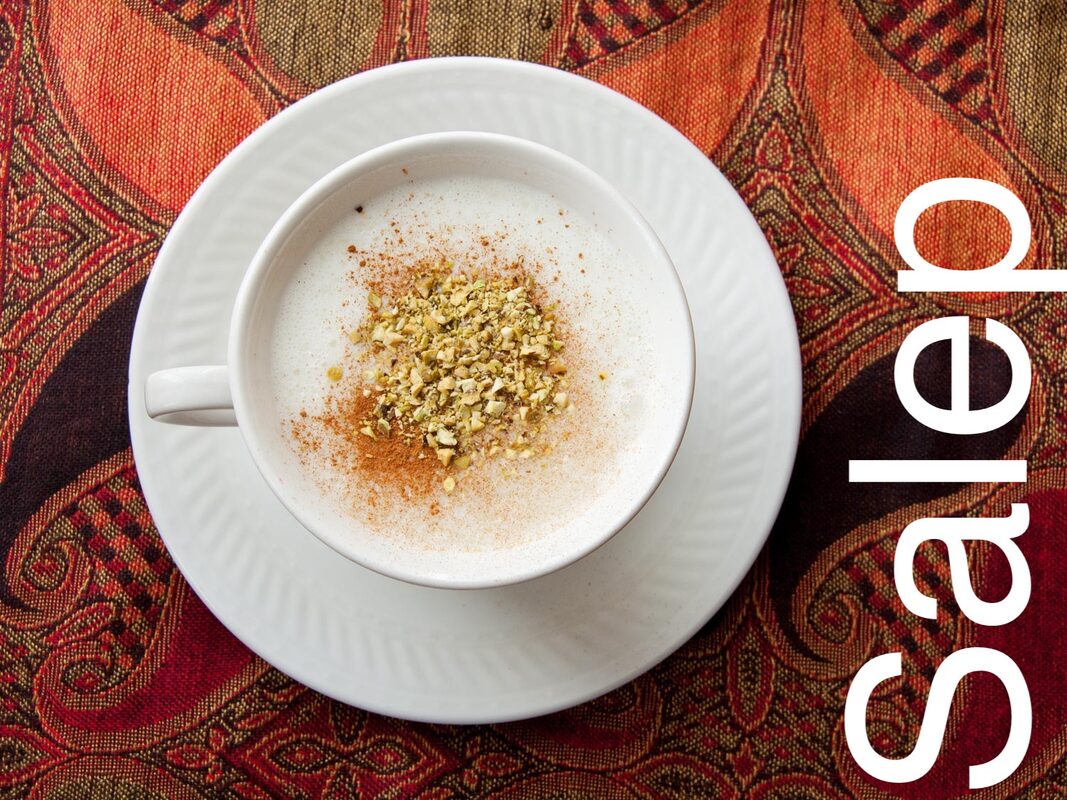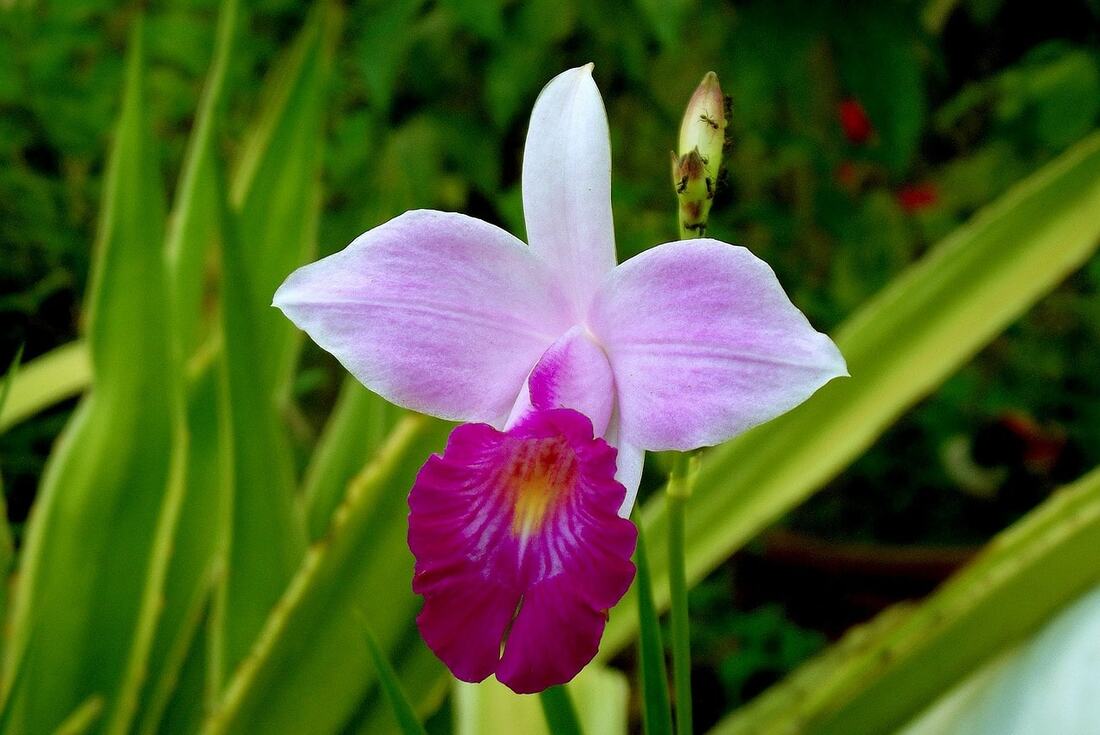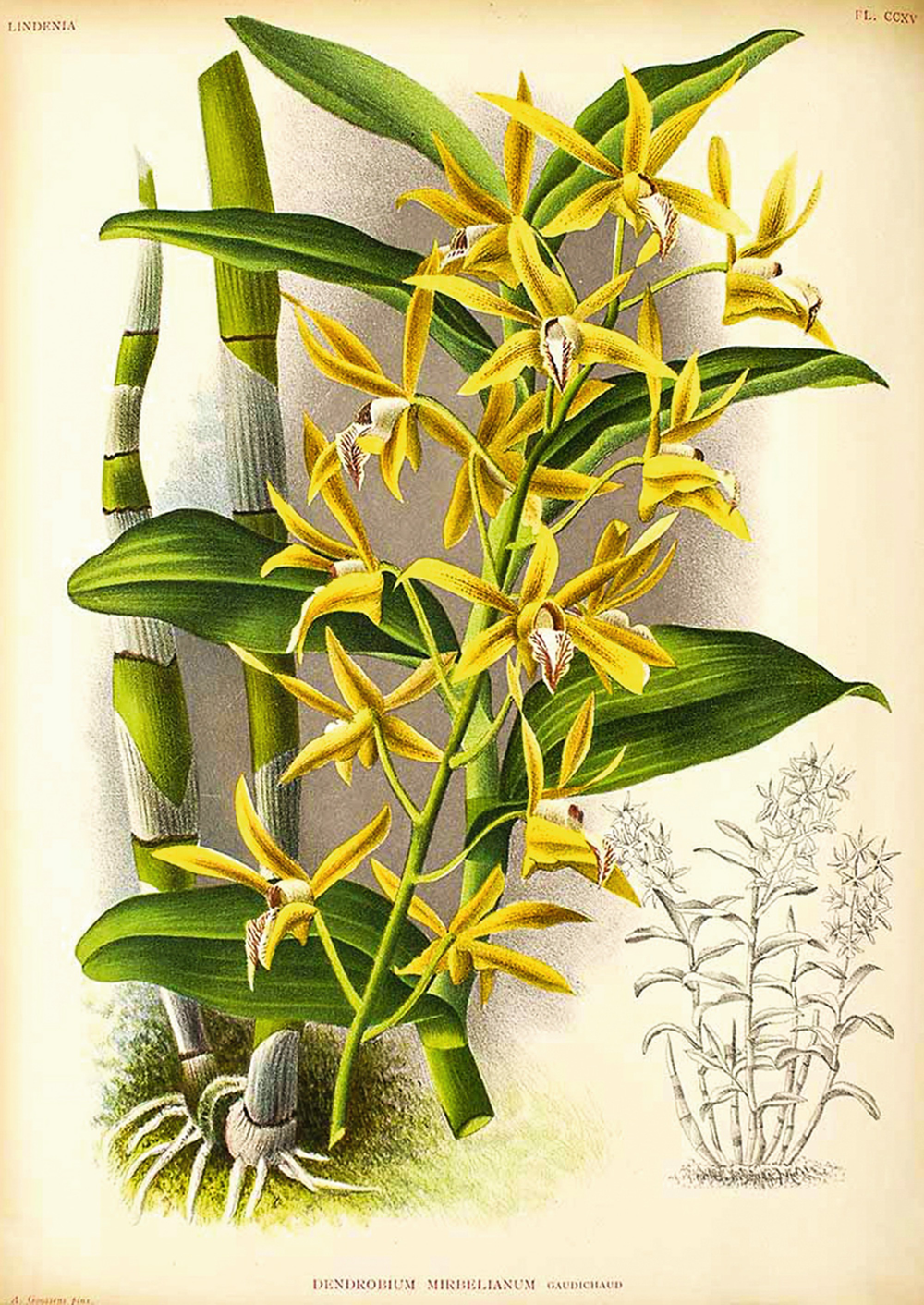The use of orchids in traditional medicine is not limited to Chinese and Ayurvedic traditions. Orchids have also played a significant role in the traditional medicinal systems of Arabia and Malaya (Southeast Asia). Both regions have a rich history of herbal medicine, and orchids have been valued for their therapeutic properties in these systems for centuries.
In Arabia, traditional medicine is deeply rooted in the cultural practices and knowledge of the indigenous people. The use of medicinal plants, including orchids, has been passed down through generations, forming an integral part of the local healing practices. Orchids are often referred to as "Ard Al-Ramla," which translates to "the land of sand" in Arabic, signifying their ability to thrive in the arid desert landscapes of the Arabian Peninsula.
One of the most well-known orchids used in Arabian traditional medicine is the Salep orchid (Dactylorhiza romana), also known as Sahlab or Sahlep. The tubers of this orchid species are used to make a traditional hot beverage known as Sahlab, which is believed to have various health benefits. Sahlab is popularly consumed during the winter months to warm the body and alleviate respiratory issues, such as coughs and sore throats. It is also considered to have aphrodisiac properties and is used to enhance male fertility.
In Malaya, which includes countries like Malaysia, Indonesia, and parts of Thailand, traditional medicine has a long history of utilizing the rich biodiversity of the tropical rainforests. Orchids, along with other medicinal plants, play a crucial role in the indigenous healing practices of the region.
One of the most prominent orchids used in Malaya's traditional medicine is the Tiger Orchid (Grammatophyllum speciosum), also known as Bunga Bidadari or Queen of Orchids. The large and showy flowers of the Tiger Orchid are believed to have various medicinal properties. In traditional Malay medicine, different parts of the orchid, such as the roots, leaves, and flowers, are used to treat various ailments, including fever, cough, and digestive issues.
Another well-known orchid in the Malaya medicinal system is the Vanda tessellata, commonly known as the Blue Orchid or Neelambari. In traditional Malay medicine, the roots of this orchid are used to prepare herbal remedies for promoting general health and well-being. It is believed to have antioxidant and anti-inflammatory properties.
The traditional medicinal systems in both Arabia and Malaya are based on the principles of balancing the body's energies and restoring harmony within. Herbal remedies, including those derived from orchids, are often used to address specific health conditions and promote overall wellness.
While the therapeutic use of orchids in these traditional medicinal systems has been valued for generations, it is essential to note that scientific research on the medicinal properties of orchids in Arabia and Malaya is limited compared to other traditional medicine systems. However, with the growing interest in traditional medicine and the conservation of plant biodiversity, there is an increasing focus on understanding the therapeutic potential of orchids and other medicinal plants in these regions.
In conclusion, orchids have been an integral part of traditional medicine in both Arabia and Malaya for centuries. These beautiful and diverse plants have been valued for their therapeutic properties and have contributed to the rich cultural heritage of herbal healing in these regions. While the scientific research on the medicinal properties of orchids in these traditional systems is limited, the knowledge and use of orchids in traditional medicine continue to be an important part of the local healing practices. As interest in traditional medicine and plant conservation grows, further research may shed more light on the therapeutic potential of orchids in Arabia and Malaya's medicinal systems, preserving and expanding the understanding of these valuable natural remedies for future generations.
In Arabia, traditional medicine is deeply rooted in the cultural practices and knowledge of the indigenous people. The use of medicinal plants, including orchids, has been passed down through generations, forming an integral part of the local healing practices. Orchids are often referred to as "Ard Al-Ramla," which translates to "the land of sand" in Arabic, signifying their ability to thrive in the arid desert landscapes of the Arabian Peninsula.
One of the most well-known orchids used in Arabian traditional medicine is the Salep orchid (Dactylorhiza romana), also known as Sahlab or Sahlep. The tubers of this orchid species are used to make a traditional hot beverage known as Sahlab, which is believed to have various health benefits. Sahlab is popularly consumed during the winter months to warm the body and alleviate respiratory issues, such as coughs and sore throats. It is also considered to have aphrodisiac properties and is used to enhance male fertility.
In Malaya, which includes countries like Malaysia, Indonesia, and parts of Thailand, traditional medicine has a long history of utilizing the rich biodiversity of the tropical rainforests. Orchids, along with other medicinal plants, play a crucial role in the indigenous healing practices of the region.
One of the most prominent orchids used in Malaya's traditional medicine is the Tiger Orchid (Grammatophyllum speciosum), also known as Bunga Bidadari or Queen of Orchids. The large and showy flowers of the Tiger Orchid are believed to have various medicinal properties. In traditional Malay medicine, different parts of the orchid, such as the roots, leaves, and flowers, are used to treat various ailments, including fever, cough, and digestive issues.
Another well-known orchid in the Malaya medicinal system is the Vanda tessellata, commonly known as the Blue Orchid or Neelambari. In traditional Malay medicine, the roots of this orchid are used to prepare herbal remedies for promoting general health and well-being. It is believed to have antioxidant and anti-inflammatory properties.
The traditional medicinal systems in both Arabia and Malaya are based on the principles of balancing the body's energies and restoring harmony within. Herbal remedies, including those derived from orchids, are often used to address specific health conditions and promote overall wellness.
While the therapeutic use of orchids in these traditional medicinal systems has been valued for generations, it is essential to note that scientific research on the medicinal properties of orchids in Arabia and Malaya is limited compared to other traditional medicine systems. However, with the growing interest in traditional medicine and the conservation of plant biodiversity, there is an increasing focus on understanding the therapeutic potential of orchids and other medicinal plants in these regions.
In conclusion, orchids have been an integral part of traditional medicine in both Arabia and Malaya for centuries. These beautiful and diverse plants have been valued for their therapeutic properties and have contributed to the rich cultural heritage of herbal healing in these regions. While the scientific research on the medicinal properties of orchids in these traditional systems is limited, the knowledge and use of orchids in traditional medicine continue to be an important part of the local healing practices. As interest in traditional medicine and plant conservation grows, further research may shed more light on the therapeutic potential of orchids in Arabia and Malaya's medicinal systems, preserving and expanding the understanding of these valuable natural remedies for future generations.
To experience augmented reality, please open the Facebook-app using QR code and point to the image below
Malaysia, with its rich biodiversity and diverse cultural heritage, boasts a wide array of traditional medicinal practices that incorporate the use of local plants, including orchids. Traditional Malay and 'Orang Asli' (Indigenous people) medicinal systems in Malaysia are deeply rooted in the knowledge passed down through generations and have been used to address various health issues for centuries. Alongside these indigenous practices, Malaysia also embraces ancient Chinese and Indian traditional medicines, creating a unique blend of therapeutic approaches.
One of the remarkable aspects of traditional medicine in Malaysia is its vast utilization of local plants. It is estimated that around 1,300 species of local plants are known to possess medicinal properties, making the country's flora a treasure trove of potential remedies. Among this diverse array of plants, orchids hold a special place due to their unique properties and cultural significance.
Malaysia is home to over 6,000 species of tropical plant species, many of which have been incorporated into traditional medicinal practices. While various plants are used for different purposes, orchids are particularly valued for their potential therapeutic benefits. Orchids have been an integral part of local healing practices for generations, and their use in traditional medicine reflects the deep connection between nature and human well-being in Malaysian culture.
The Ottomans, who once held significant power and influence in the region, recognized the medicinal properties of orchids and extracted 'Sahlep' from the dried tubers of these plants. 'Sahlep,' derived from orchids, holds a place in history as a valuable remedy known for its potential to provide nourishment and health benefits. While the specific species of orchids used for 'Sahlep' varied, it was predominantly sourced from Orchis morio in the East and from Orchis mascula, Orchis maculata, or Orchis latifolia in the UK.
In Malaysia, traditional medicine continues to play an essential role in the lives of many people, especially in rural areas where access to modern healthcare may be limited. The knowledge of traditional healing practices is often passed down through oral traditions and is deeply intertwined with cultural and spiritual beliefs.
The traditional Malay medicinal system, which incorporates the use of orchids, focuses on promoting balance and harmony within the body. Different parts of the orchid plant, such as the roots, leaves, and flowers, may be used to prepare herbal remedies for various health conditions, including digestive issues, respiratory problems, and skin ailments.
For the 'Orang Asli' communities, who have lived in Malaysia for thousands of years, traditional medicinal practices are deeply connected to their intimate knowledge of the natural environment. Orchids, along with other plants, are believed to possess specific healing properties and are used to address ailments and maintain overall well-being.
With the integration of ancient Chinese and Indian traditional medicines, Malaysia's healing practices have become a rich tapestry of diverse knowledge and approaches to wellness. The synergy between these different systems highlights the country's multicultural heritage and the valuable exchange of knowledge and traditions over centuries.
In conclusion, traditional medicinal practices in Malaysia are a reflection of the country's rich natural resources, diverse cultural heritage, and deep-rooted beliefs in the healing powers of nature. Orchids, with their unique characteristics and potential therapeutic benefits, have earned a place of prominence in these traditional systems. As modern research continues to explore the medicinal properties of orchids and other plants, traditional medicinal practices in Malaysia remain an essential part of the country's cultural identity and continue to contribute to the well-being of its people.
One of the remarkable aspects of traditional medicine in Malaysia is its vast utilization of local plants. It is estimated that around 1,300 species of local plants are known to possess medicinal properties, making the country's flora a treasure trove of potential remedies. Among this diverse array of plants, orchids hold a special place due to their unique properties and cultural significance.
Malaysia is home to over 6,000 species of tropical plant species, many of which have been incorporated into traditional medicinal practices. While various plants are used for different purposes, orchids are particularly valued for their potential therapeutic benefits. Orchids have been an integral part of local healing practices for generations, and their use in traditional medicine reflects the deep connection between nature and human well-being in Malaysian culture.
The Ottomans, who once held significant power and influence in the region, recognized the medicinal properties of orchids and extracted 'Sahlep' from the dried tubers of these plants. 'Sahlep,' derived from orchids, holds a place in history as a valuable remedy known for its potential to provide nourishment and health benefits. While the specific species of orchids used for 'Sahlep' varied, it was predominantly sourced from Orchis morio in the East and from Orchis mascula, Orchis maculata, or Orchis latifolia in the UK.
In Malaysia, traditional medicine continues to play an essential role in the lives of many people, especially in rural areas where access to modern healthcare may be limited. The knowledge of traditional healing practices is often passed down through oral traditions and is deeply intertwined with cultural and spiritual beliefs.
The traditional Malay medicinal system, which incorporates the use of orchids, focuses on promoting balance and harmony within the body. Different parts of the orchid plant, such as the roots, leaves, and flowers, may be used to prepare herbal remedies for various health conditions, including digestive issues, respiratory problems, and skin ailments.
For the 'Orang Asli' communities, who have lived in Malaysia for thousands of years, traditional medicinal practices are deeply connected to their intimate knowledge of the natural environment. Orchids, along with other plants, are believed to possess specific healing properties and are used to address ailments and maintain overall well-being.
With the integration of ancient Chinese and Indian traditional medicines, Malaysia's healing practices have become a rich tapestry of diverse knowledge and approaches to wellness. The synergy between these different systems highlights the country's multicultural heritage and the valuable exchange of knowledge and traditions over centuries.
In conclusion, traditional medicinal practices in Malaysia are a reflection of the country's rich natural resources, diverse cultural heritage, and deep-rooted beliefs in the healing powers of nature. Orchids, with their unique characteristics and potential therapeutic benefits, have earned a place of prominence in these traditional systems. As modern research continues to explore the medicinal properties of orchids and other plants, traditional medicinal practices in Malaysia remain an essential part of the country's cultural identity and continue to contribute to the well-being of its people.
Arundina graminifola, commonly known as the "bamboo orchid," is a fascinating and versatile evergreen orchid that thrives in various regions of Asia, including Malaysia. This exquisite orchid species is not only admired for its ornamental beauty but also revered for its medicinal properties. Among the 'Orang Asli,' the indigenous people of Malaysia, Arundina graminifola holds a special place as a traditional remedy for addressing various health issues, particularly for its anti-bacterial and analgesic properties.
The bamboo orchid derives its common name from its striking resemblance to bamboo due to its tall, slender stems and lance-shaped leaves. The plant's graceful appearance has made it a popular choice for ornamental purposes in gardens and landscapes, enhancing the beauty of natural surroundings. Its aesthetic appeal, coupled with its adaptability to diverse environments, has made it a favorite among horticulturists and garden enthusiasts alike.
Beyond its ornamental value, the medicinal uses of Arundina graminifola are well recognized in traditional healing practices. For generations, the 'Orang Asli' have incorporated various parts of the bamboo orchid into their healing rituals to alleviate various health concerns.
One of the key medicinal properties of Arundina graminifola lies in its antibacterial attributes. The plant contains bioactive compounds that exhibit antibacterial activity, making it an effective natural remedy to combat certain bacterial infections. In traditional medicine, parts of the bamboo orchid, such as its leaves and stems, are used to prepare medicinal decoctions or infusions that are consumed orally or applied externally to treat bacterial infections, wounds, and skin irritations.
Additionally, the roots of the bamboo orchid are highly valued for their analgesic properties. The 'Orang Asli' have long utilized these roots to alleviate body aches and pains. The roots are often pounded and made into a poultice or boiled to create a medicinal solution that can be applied topically to sore muscles and joints.
The traditional use of Arundina graminifola as a natural remedy highlights the deep connection between the 'Orang Asli' and their natural environment. Traditional healing practices in indigenous cultures are often rooted in a profound understanding of local flora and fauna. The bamboo orchid's prominence in traditional medicine reflects the 'Orang Asli's' deep knowledge of the plants in their surroundings and their keen observation of the healing properties that nature provides.
Despite the advancement of modern medicine, traditional healing practices continue to play a crucial role in the lives of many 'Orang Asli.' These practices are passed down through generations and are deeply ingrained in the cultural identity of these indigenous communities. The use of Arundina graminifola as a medicinal plant demonstrates the importance of preserving and promoting traditional knowledge and practices that have been passed down through centuries.
Moreover, the bamboo orchid's presence in traditional healing practices showcases the potential for collaboration between traditional medicine and modern scientific research. As more attention is given to traditional healing practices and the medicinal properties of plants, there is an opportunity to bridge the gap between ancient wisdom and modern medical advancements.
In conclusion, Arundina graminifola, the bamboo orchid, is not only a visually captivating orchid species but also a valuable medicinal plant in traditional Malaysian healing practices. Its antibacterial and analgesic properties make it a sought-after remedy for various health concerns among the 'Orang Asli.' As we appreciate the ornamental beauty of this orchid, we must also recognize its role in traditional medicine and the importance of preserving and valuing traditional knowledge and practices. By understanding the potential of plants like Arundina graminifola in traditional healing, we open the door to further exploration and collaboration between traditional medicine and modern scientific research, enriching our understanding of the healing powers of nature.
The bamboo orchid derives its common name from its striking resemblance to bamboo due to its tall, slender stems and lance-shaped leaves. The plant's graceful appearance has made it a popular choice for ornamental purposes in gardens and landscapes, enhancing the beauty of natural surroundings. Its aesthetic appeal, coupled with its adaptability to diverse environments, has made it a favorite among horticulturists and garden enthusiasts alike.
Beyond its ornamental value, the medicinal uses of Arundina graminifola are well recognized in traditional healing practices. For generations, the 'Orang Asli' have incorporated various parts of the bamboo orchid into their healing rituals to alleviate various health concerns.
One of the key medicinal properties of Arundina graminifola lies in its antibacterial attributes. The plant contains bioactive compounds that exhibit antibacterial activity, making it an effective natural remedy to combat certain bacterial infections. In traditional medicine, parts of the bamboo orchid, such as its leaves and stems, are used to prepare medicinal decoctions or infusions that are consumed orally or applied externally to treat bacterial infections, wounds, and skin irritations.
Additionally, the roots of the bamboo orchid are highly valued for their analgesic properties. The 'Orang Asli' have long utilized these roots to alleviate body aches and pains. The roots are often pounded and made into a poultice or boiled to create a medicinal solution that can be applied topically to sore muscles and joints.
The traditional use of Arundina graminifola as a natural remedy highlights the deep connection between the 'Orang Asli' and their natural environment. Traditional healing practices in indigenous cultures are often rooted in a profound understanding of local flora and fauna. The bamboo orchid's prominence in traditional medicine reflects the 'Orang Asli's' deep knowledge of the plants in their surroundings and their keen observation of the healing properties that nature provides.
Despite the advancement of modern medicine, traditional healing practices continue to play a crucial role in the lives of many 'Orang Asli.' These practices are passed down through generations and are deeply ingrained in the cultural identity of these indigenous communities. The use of Arundina graminifola as a medicinal plant demonstrates the importance of preserving and promoting traditional knowledge and practices that have been passed down through centuries.
Moreover, the bamboo orchid's presence in traditional healing practices showcases the potential for collaboration between traditional medicine and modern scientific research. As more attention is given to traditional healing practices and the medicinal properties of plants, there is an opportunity to bridge the gap between ancient wisdom and modern medical advancements.
In conclusion, Arundina graminifola, the bamboo orchid, is not only a visually captivating orchid species but also a valuable medicinal plant in traditional Malaysian healing practices. Its antibacterial and analgesic properties make it a sought-after remedy for various health concerns among the 'Orang Asli.' As we appreciate the ornamental beauty of this orchid, we must also recognize its role in traditional medicine and the importance of preserving and valuing traditional knowledge and practices. By understanding the potential of plants like Arundina graminifola in traditional healing, we open the door to further exploration and collaboration between traditional medicine and modern scientific research, enriching our understanding of the healing powers of nature.
The use of orchids for the production of Salep, a traditional herbal remedy and flavoring agent, has had a significant impact on the survival of several orchid species in Turkey. Salep is derived from the dried tubers of various orchids, particularly species of Orchis and Dactylorhiza, which are native to the region. This practice has a long history in Turkish culture, dating back centuries, and has been an essential component of traditional medicine and culinary traditions.
The process of obtaining Salep is labor-intensive and requires a large number of orchid tubers. It is estimated that approximately 2,600 tubers are needed to produce just one kilogram of dried Salep. This high demand for tubers has put immense pressure on wild orchid populations, leading to over-harvesting and, consequently, the decline of several orchid species in Turkey.
In the early 2000s, concerns about the unsustainable harvesting of orchids for Salep production came to light when the BBC reported that one ice cream factory alone used up to 3 tonnes of Salep or around 12 million orchid plants in a single year. This staggering number highlights the extent of the impact of the Salep industry on orchid populations in Turkey.
As a result of this extensive harvesting, several orchid species in Turkey are now facing the threat of extinction. The continued removal of tubers from the wild has disrupted the natural reproductive cycle of these orchids, hindering their ability to reproduce and replenish their populations. Orchids, in general, are slow-growing and have specific environmental requirements for germination and growth. The removal of tubers on such a large scale has hindered the ability of these orchids to regenerate, leading to a decline in their numbers and a loss of genetic diversity.
Furthermore, the decline of orchids due to the Salep industry has broader ecological implications. Orchids play a crucial role in their ecosystems as pollinators and food sources for various wildlife, including insects and animals. The reduction in orchid populations can have cascading effects on other species that depend on them for survival, potentially disrupting the delicate balance of local ecosystems.
In response to the declining orchid populations and the threat of extinction, conservation efforts have been initiated to protect and preserve these precious plants. Many conservation organizations and researchers are working to raise awareness about the impact of the Salep industry on orchids and to promote sustainable practices.
One approach is to encourage the cultivation of orchids in controlled environments, such as botanical gardens or nurseries, to meet the demand for Salep without relying solely on wild harvesting. Cultivation provides an alternative source of tubers that can reduce the pressure on wild orchid populations.
Another critical aspect of conservation efforts is raising awareness among local communities about the importance of protecting orchids and their habitats. Collaborating with indigenous communities and involving them in conservation initiatives is essential to ensuring the long-term sustainability of orchid populations.
Legal protection and regulations are also essential to curb the illegal harvesting of orchids and control the Salep industry's impact on wild orchid populations. Implementing measures to limit the trade and ensure responsible harvesting practices can help safeguard these precious plants.
In conclusion, the use of orchids for Salep production in Turkey has had a profound impact on the survival of several orchid species. The high demand for tubers has led to over-harvesting and a decline in orchid populations, putting several species at risk of extinction. Conservation efforts are vital to protect these precious plants and their ecosystems. By promoting sustainable practices, raising awareness, and implementing legal protection, we can ensure the preservation of orchids for future generations and maintain the delicate balance of nature. It is crucial that we recognize the value of these unique plants and take collective action to safeguard their future in the face of human activities and ecological changes.
The process of obtaining Salep is labor-intensive and requires a large number of orchid tubers. It is estimated that approximately 2,600 tubers are needed to produce just one kilogram of dried Salep. This high demand for tubers has put immense pressure on wild orchid populations, leading to over-harvesting and, consequently, the decline of several orchid species in Turkey.
In the early 2000s, concerns about the unsustainable harvesting of orchids for Salep production came to light when the BBC reported that one ice cream factory alone used up to 3 tonnes of Salep or around 12 million orchid plants in a single year. This staggering number highlights the extent of the impact of the Salep industry on orchid populations in Turkey.
As a result of this extensive harvesting, several orchid species in Turkey are now facing the threat of extinction. The continued removal of tubers from the wild has disrupted the natural reproductive cycle of these orchids, hindering their ability to reproduce and replenish their populations. Orchids, in general, are slow-growing and have specific environmental requirements for germination and growth. The removal of tubers on such a large scale has hindered the ability of these orchids to regenerate, leading to a decline in their numbers and a loss of genetic diversity.
Furthermore, the decline of orchids due to the Salep industry has broader ecological implications. Orchids play a crucial role in their ecosystems as pollinators and food sources for various wildlife, including insects and animals. The reduction in orchid populations can have cascading effects on other species that depend on them for survival, potentially disrupting the delicate balance of local ecosystems.
In response to the declining orchid populations and the threat of extinction, conservation efforts have been initiated to protect and preserve these precious plants. Many conservation organizations and researchers are working to raise awareness about the impact of the Salep industry on orchids and to promote sustainable practices.
One approach is to encourage the cultivation of orchids in controlled environments, such as botanical gardens or nurseries, to meet the demand for Salep without relying solely on wild harvesting. Cultivation provides an alternative source of tubers that can reduce the pressure on wild orchid populations.
Another critical aspect of conservation efforts is raising awareness among local communities about the importance of protecting orchids and their habitats. Collaborating with indigenous communities and involving them in conservation initiatives is essential to ensuring the long-term sustainability of orchid populations.
Legal protection and regulations are also essential to curb the illegal harvesting of orchids and control the Salep industry's impact on wild orchid populations. Implementing measures to limit the trade and ensure responsible harvesting practices can help safeguard these precious plants.
In conclusion, the use of orchids for Salep production in Turkey has had a profound impact on the survival of several orchid species. The high demand for tubers has led to over-harvesting and a decline in orchid populations, putting several species at risk of extinction. Conservation efforts are vital to protect these precious plants and their ecosystems. By promoting sustainable practices, raising awareness, and implementing legal protection, we can ensure the preservation of orchids for future generations and maintain the delicate balance of nature. It is crucial that we recognize the value of these unique plants and take collective action to safeguard their future in the face of human activities and ecological changes.
Join Scentopia, Sentosa's latest tourist attraction wonderful orchid scent crafting, fragrance tour, bridal shower or corporate team building which includes perfume making onsite and offsite, beach activities and more. We also serve primary school learning journey, secondary students and pupil on industrial excursions. Know more about our orchids perfume bar or therapeutic orchid scents and other wellness aromas. Conatct Perfume workshop or book a scent crafting session here.




